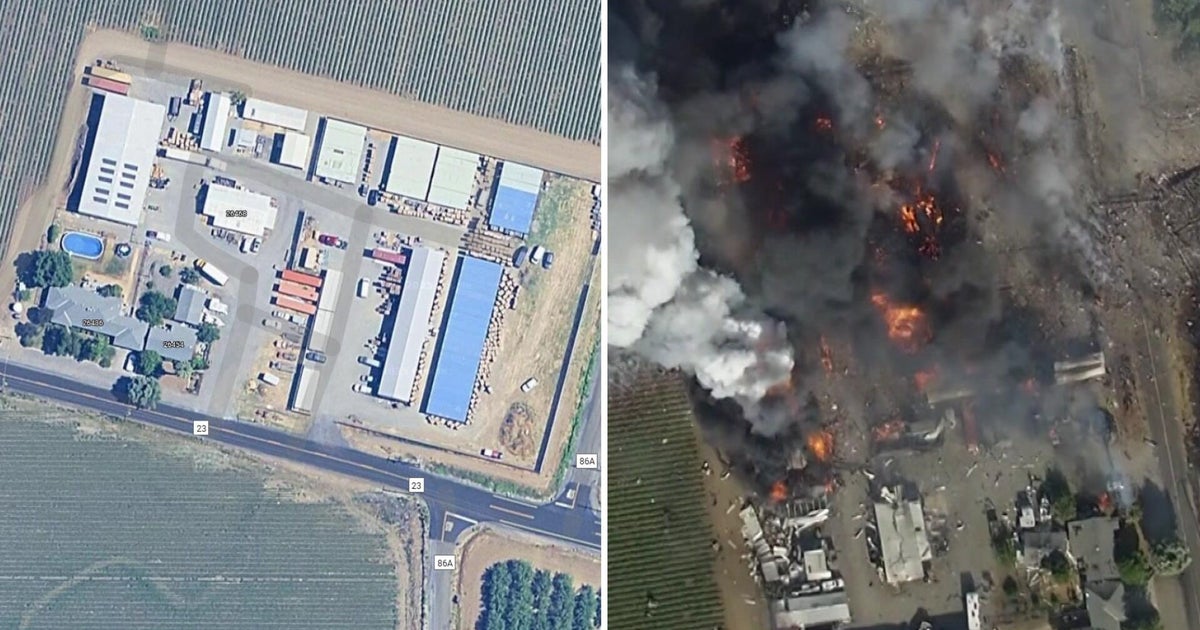Lawrence Livermore Developing Killer Asteroid Deflecting Technology
LIVERMORE (CBS SF) -- Like a scene out of the block-buster movie 'Armageddon,' Lawrence Livermore National Lab researchers have been developing a plan to deflect a killer asteroid if one should ever be on a collision course with earth.
In the movie, Bruce Willis leads a team of astronauts and oil drillers on a mission to deflect a massive asteroid as it approaches earth by burying a nuclear bomb deep within its surface and detonating it to alter its course.
In real life, the researchers -- a team made up of scientists from Lawrence Livermore, NASA's Goddard Space Flight Center, Los Alamos National Laboratory and the National Nuclear Security Administration -- say that would not work.
"The whole purpose of studies like this is to help us shorten the response timeline if we were to see something coming at us," said LLNL physicist Megan Bruck Syal, who is the LLNL planetary defense team lead. "We don't want to have to scramble to figure out whether to use an impactor or a nuclear device on a particular asteroid. These studies help us define those thresholds."
As a target for their work, researchers chose 101955 Bennu, a massive asteroid that has a remote chance of crossing paths with Earth more than a century from now.
Initially, researchers look at the option of slamming several spacecraft -- called kinetic impactors -- into the asteroid to alter its course. But they discovered kinetic impactors may not be the most effective way to deflect extreme large asteroids. Researchers say it would take between 34 and 53 impactors to make a Bennu-class asteroid miss the Earth with 10 years of lead time.
The exact number, researchers said, would depend on the desired Earth-miss-distance and the impact conditions at the asteroid.
In a second case study, the team found that a standoff nuclear impulse would be effective in deflecting Bennu and protecting life on Earth. But unlike the
portrayal in Armageddon, the nuclear deflection approach would consist of detonating a nuclear explosive some distance from the asteroid.
The nuclear blast would flood one side of the asteroid with X-rays, vaporizing a layer of the surface, which would create rocket-like propulsion as vaporized material is ejected from the asteroid.
"The nuclear option would be the key to deflecting large asteroids," said Dave Dearborn, LLNL physicists. "It also offers flexibility that impactors don't. For instance, the amount of energy deposited into an asteroid with a nuclear device can be tuned by adjusting how far it is from the asteroid when detonated."
Researchers estimate that it would take a minimum of 7.4 years to plan the mission and build a spacecraft to deliver the blast to Bennu.
"Assuming the impulse was successfully delivered, changing its velocity slightly, it would take many years for the small change in speed to accumulate into a sufficient change in trajectory," the research team said in a news release.
Bennu's highly constrained orbit would lend multiple decades of lead time to such a project if it were to end up on an Earth-bound orbit. Much more uncertainty exists for other objects.
"Time would be our number one enemy," said Syal. "That's why it's critical that we advance our ability to detect threats through future space-based telescopes which would be dedicated to hunting down (asteroids)...The chances of a Bennu-class collision appear slim now, but they aren't zero and the consequences could be devastating."



